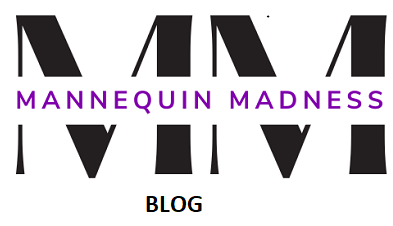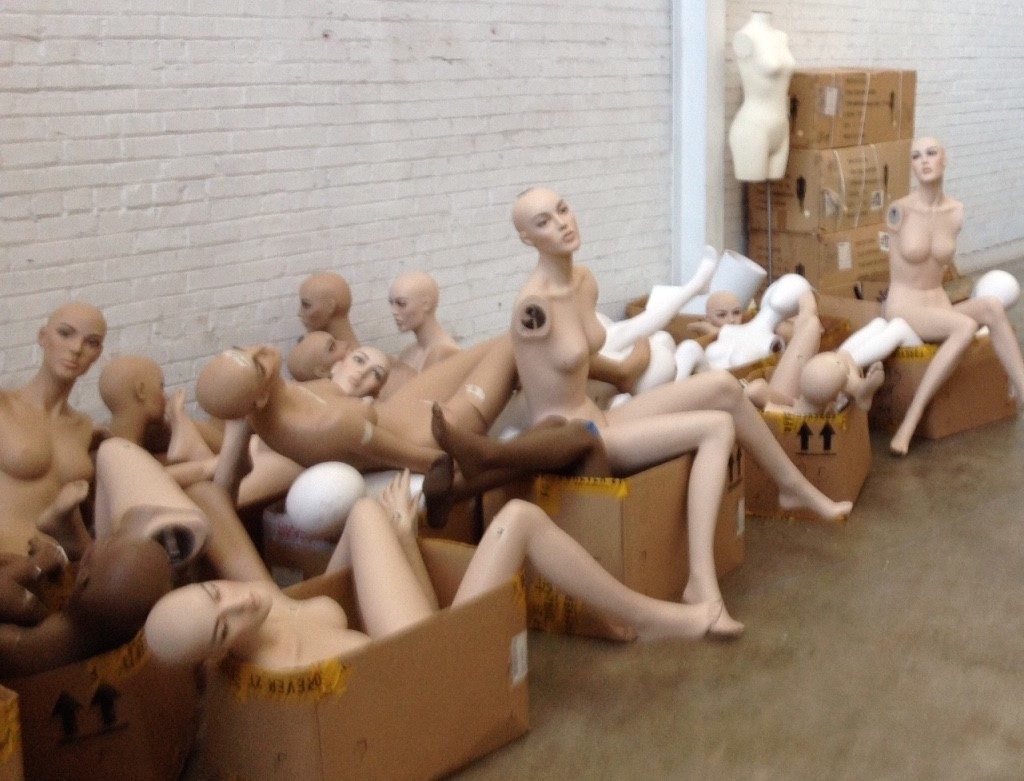According to EcoWatch, the fashion industry is one of the least environmentally friendly industries in the world, second only to the oil business.
Fortunately a lot of attention is now being focused on how to produce clothing in more sustainable ways. But very little is discussed about sustainable visual merchandising of clothing within a retail store.
The store fixtures, props and mannequins that are used to display clothing inside the store are rarely eco-friendly. And these items often end up in landfills when stores remodel or close locations.
Our company, Mannequin Madness, recycles mannequins for retail chains and this is making a big impact in reducing the environmental footprint of the retail industry. Mannequin retailers still throw their unwanted mannequins in the trash, but this is starting to change as a result of our efforts. This post will explain how.
First let’s start with and understanding of the four main reasons why retailers throw away perfectly good mannequins. This applies primarily to large retail chains, not independent retailers.
1 The retailer is going out of business or is under bankruptcy proceedings and must downsize their locations, which means there are excess mannequins they no longer have a need for.
2 The retailer is remodeling their visual merchandising displays. Mannequin styles go in and out of fashion just like clothing. And retailers, especially luxury retailers, have to look stay current and set visual display trends. So every 5-10 years a retailer installs a new collection of mannequins, even if their old ones are still serviceable.
3 When changing their visual merchandising scheme a retailer might order a series of mannequins as prototypes to test. If they aren’t happy with the look, then practically brand new mannequins get tossed in the trash.
4 The retailer wants to eliminate the use of mannequins entirely. This happened in 2003 at Sears when they wanted to look more like Target. (At that time Target wasn’t using mannequins in their stores, but has since starting using them).
Let me digress for a moment. I had just started Mannequin Madness when Sears made this decision. My husband and I rented a cargo van and drove to every Sears store within a 2 hour radius of our home to acquire their unwanted mannequins.
In a matter of months our inventory went from 50 mannequins that we had as rentals to over 500 mannequins that we acquired from Sears ! Believe it or not, at the time I was still running the business from my home.
The photo below is just some of the inventory from Sears which filled up our backyard, 2 garage stalls and our basement. If we had not acquired the mannequins, they were all going to be dumped in the trash. At the time (this was pre-internet days) I wasn’t sure if there was a market for me to resell used mannequins, so I was really taking a risk.
Let me get back on point. In each of the four scenarios above when stores are discarding mannequins, there will be a minimum of 15-20 mannequins at each location for small retail stores. But department stores might have 75-100 mannequins at a store.
The average mannequin weighs about 20 pounds and is made made out of fiberglass, a material that does not biodegrade. Mannequins also have metal hardware which attaches the limbs to the body and a stand that is metal (or sometimes glass) that enables the mannequin to stay upright.
Rarely do retailers have the time to remove the metal or glass parts from the mannequin to send to a metal recycling facility. So everything does into the dumpster.
If a store has a minimum of 15 mannequins, each one weighing 20 pounds, that is 300 pounds of mannequins at one location. And if the retailer is upgrading mannequins at 50 stores across the country, that is 15,000 pounds of mannequin waste for just one retailer.
Most national retailers have more than one location in a state, so I am being conservative when I say 50 stores.
It is expensive for retailers to rent dump bins large enough to dispose of the mannequins. And, since retailers face increasing pressure to be socially responsible, this gives them another reason to want to avoid putting mannequins in the dumpster.
Green is the new black. Retailers have told us they save anywhere from $3,000-$5,000 per store when they have us recycle their mannequins. Otherwise they have labor and waste disposal fees to pay when they throw their mannequins away.
In the past if a retailer wanted to recycle their mannequins they would have the store managers at each location call around to find a local place where they could donate the mannequins. Needless to say, this was time consuming and ineffective. Sometimes they would get lucky and find a used mannequin vendor who could service several locations.
This is where Mannequin Madness has changed the game. We have simplified the process to make it easy for retailers to recycle their mannequins. We offer them with a single point of contact and manage the process.
Thanks to the internet, we have built relationships with all the independent used mannequin vendors across the country, many of which are mom and pop businesses operating in just one city or region.
Now a retailer just has to call us with the details and then we facilitate the pick ups at their stores across the country with the vendors in our network. Think of Mannequin Madness as FTD of flower delivery…. but for mannequin pick ups!
When we first started doing this we would recycle an average about 100,000 pounds of mannequins a year. Now we recycle that many in one MONTH, with our network of vendors.
As I write this post one of my affiliates in NY picked up 58 mannequins from a Ralph Lauren warehouse, an affiliate in LA picked up 137 mannequins at a Bebe warehouse and I just picked up a little over 100 mannequins from Uniqlo.
When you work with a bunch of dummies people don’t often take you seriously, but the environmental work that we are doing is indeed serious business. If you know of a retailer who could use our services, please pass along our information.




